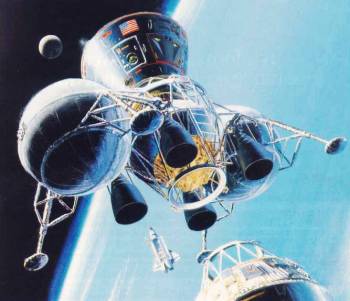Copyright 2015 Robert Clark
The Morpheus lunar lander developed by NASA demonstrates how successful NASA can be when it takes a low cost approach to developing new systems. Not only can the Morpheus be used for unmanned robotic landers, but scaled up it can produce a manned lunar lander at orders (plural) of magnitude lower cost than the $10 billion NASA previously estimated for a lunar lander. Then Project Morpheus becomes a prime example of how NASA's Technology Transfer program can be utilized.
The orders of magnitude reduction in cost is important for enabling the low cost commercial space approach to BEO (beyond low Earth orbit) spaceflight. For this to work, first, the companies that engage in the commercial space approach have to be convinced they can make a profit on such ventures. This is much easier to do when the development costs are in the ten's of millions of dollars range rather than the billions of dollars range
Now note that by taking a smaller, modular approach to BEO spaceflight, as exemplified for example by the Early Lunar Access proposal, it is only a lander that would be needed to be developed for lunar flights.
Early Lunar Access. Credit: NASA
This actually is also the case for asteroidal flights since the delta-v to near Earth asteroids is actually less than that to the Moon. No hugely expensive super heavy lift launchers would be required. Only currently existing launchers, or those fully paid for by the developer such as the Falcon Heavy, would be used. Then that huge proportion of the development cost of such missions for the HLV would be eliminated.
Then at least the development costs, aside from the launch costs, can become manageable for private financing. Then private BEO proposals such as by Golden Spike Company. Planetary Resources, Inc., Deep Space Industries, etc. become feasible.
Bob Clark





No comments:
Post a Comment